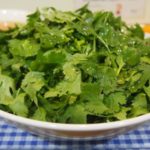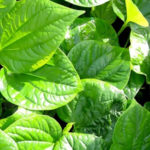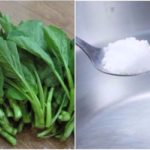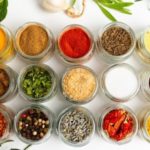To blanch sautéed vegetables with crisp and crunchy vegetables, you also need a secret. Here are tips for blanching green vegetables that you can refer to.

How to blanch vegetables correctly. (Illustrative image)
The ingredients include 500 grams of green vegetables; 3-4 green plums and 1 liter of cold water.
Do as follows: Peel the green plums, slice them into 4 or around the fruit. Pick and wash the vegetables and drain them.
Then boil 1 liter of water with 1 teaspoon of salt and when the water boils, add the vegetables to blanch.
During the blanching of vegetables, pay attention: use high heat, occasionally turn the vegetables and use a fork to evenly contact the vegetables with water. When the vegetables are cooked (the vegetables must be soft, press with your hand to see if they are soft enough), lift the vegetables out on a strainer to drain and put them on a plate.
The blanching water for vegetables can be added with plums, boil for about 3 more minutes then remove, mashed the plums into the water. Knead slowly to achieve the desired level of acidity.
In addition, you can also reduce 1 plum, put it in fish sauce, mash it, add a few cloves of garlic, fresh chili to have a delicious dipping sauce for blanched vegetables.
In addition, to blanch crisp green vegetables, you can also refer to the following tips.
Blanch with submerged water
When blanching vegetables and any other type of vegetables, make sure that the vegetables are submerged in water. Enough water to submerge the vegetables will help the vegetables cook evenly and maintain a beautiful green color.
Use a large pot to blanch vegetables so that you can easily turn the vegetables while blanching.
Add salt to the blanching water
When blanching vegetables, you should add a little salt. Salt helps the vegetables retain their beautiful green color and also has a stronger flavor. With 1 liter of water, you can add 1/2 teaspoon of salt. Do not add too much salt as it will make the vegetables salty.
When the water boils, add the vegetables and quickly turn them to immerse the vegetables in the water. When the water boils, continue to turn the vegetables and use a fork to press the vegetables down under the water.
Some people will use sugar instead of salt. This method also helps the vegetables retain their beautiful green color.
Add cooking oil
To make the vegetables green and shiny, you can add a little cooking oil to the blanching water. Add the oil first and wait until the water boils to add the vegetables.
Blanching time for vegetables
Depending on the preference of eating cooked or well-cooked vegetables, you can adjust the blanching time for vegetables accordingly. If you like crispy vegetables, you can blanch them for about 3 minutes. If you want soft vegetables, you need to blanch them longer, about 5 minutes.
Soak blanched vegetables in icy water
According to vtc.vn



































